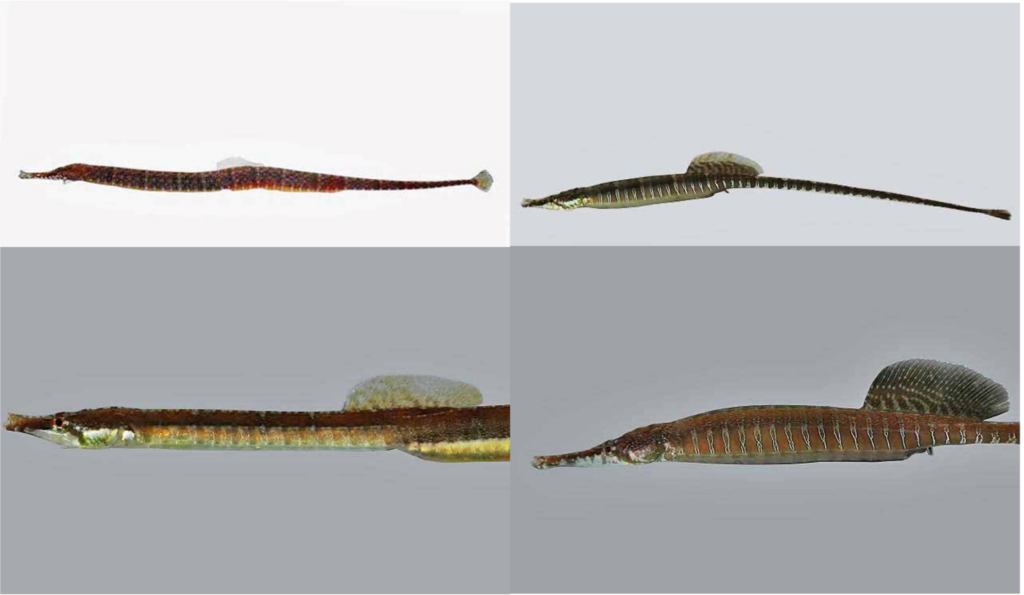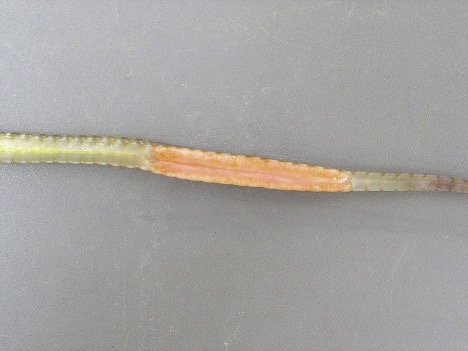Dr. Geoffrey Smith
NWFSC Biology Instructor
The Gulf Pipefish is a relatively common but often overlooked fish species found throughout much of Florida’s waters. They are found from Georgia southward along the Atlantic coast, throughout the coastal waters of the Gulf of Mexico, and into the northern coast of South America (Figure 1). Pipefishes are close relatives of sea horses, these two groups of fish are the primary species in the Family Syngnathidae. The family and genus names refer to the fused jaws/snouts of these fishes. These names are derived from the Greek syn or symphysis which translates to grown together and gnathus which translates to jaw. The species name scovelli is in honor of a physician and amateur naturalist, Josiah Scovell, who aided in the collection of the first specimen described by science. Their long, tubular snouts allow them to create a vacuum-like suction to capture prey, which typically includes small crustaceans such as copepods, amphipods, mysids, and small shrimp. The snout of Gulf Pipefish is of moderate length distinguishing it from most of our other local pipefish species that have a much shorter or longer snout. Like all pipefishes, their bodies are long and thin. This combined with a dark green to brown coloration allows them to blend in with the seagrasses, macroalgae, and marsh grasses where they often reside (Figure 2). The Gulf Pipefish is widely tolerant of a range of salinities and can be found in anything from full salinity sea water in the coastal waters of the Gulf to full freshwater miles upstream in rivers, creeks, and springs connected to our estuaries. The Gulf Pipefish and other members of its family are also unique in the fact that males have modified folds of skin that act as a brood pouch where they hold fertilized eggs until they hatch (Figure 3). Besides the presence of a brood pouch, males tend to have less deep bodies and less well defined iridescent bars on their abdomens (Figure 2). In the US, there is a small marker for both pipefishes and seahorses for the aquarium trade and as beach/coastal novelties. Outside of the US, there is some harvest of these species for traditional medicines. Recreational harvest of this species in Florida falls under the Marine Life recreational regulations: https://myfwc.com/fishing/saltwater/recreational/marine-life/.

Figure 1: Distribution of Gulf Pipefish (https://biogeodb.stri.si.edu/caribbean/en/pages).

Figure 2: Typical coloration of a male (top left) and female (top right) Gulf Pipefish. The bottom left is a close-up view of a male Gulf Pipefish, note the thinner body, front portion of the brood pouch below the dorsal fin, and less pronounced iridescent markings on the abdomen. The bottom right is a close-up view of a female Gulf Pipefish, note the deeper body, lack of brood pouch bellow the dorsal fin, and more pronounced iridescent markings on the abdomen. All photos by J. Van Tassell and D. Robertson (https://biogeodb.stri.si.edu/caribbean/en/pages).

Figure 3: The underside of a male Gulf Pipefish, clearly showing the brood pouch. The small yellow-orange circles are fertilized eggs that are early in development (https://txmarspecies.tamug.edu/index.cfm).



